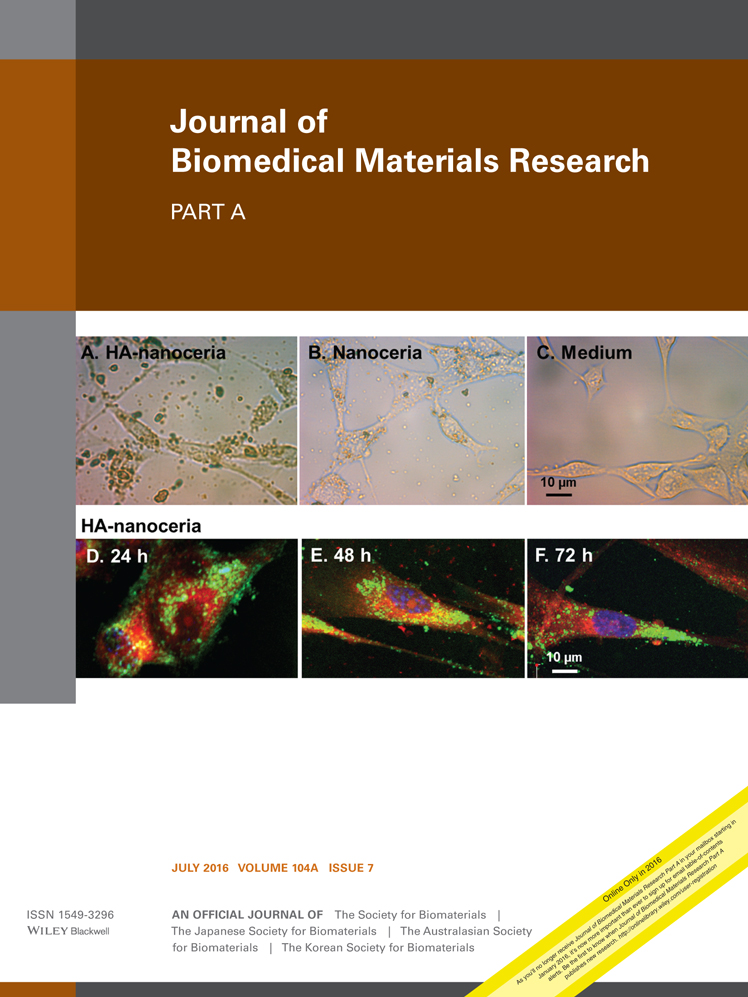In vitro osteogenic induction of human marrow-derived mesenchymal stem cells by PCL fibrous scaffolds containing dexamethazone-loaded chitosan microspheres
Abstract
This research reports the encapsulation of dexamethasone (Dex) within the chitosan microspheres (CSMs) embedded in a fibrous structure of poly(ɛ-caprolactone) (PCL) to provide a platform for osteogenic differentiation of human mesenchymal stem cells (hMSCs). Dex loaded CSMs were prepared by spray drying a mixture of chitosan and Dex. Then, they were electrospun with PCL solution to create a bilayer fibrous scaffold (PCL/CSMs-Dex). The CSMs act as good depots for sustained release of Dex over a period of 14 days, without noticeable burst release. This is mainly attributed to the core-shell structure of the final PCL/CSMs-Dex-matrix, which could prolong the release and eliminate the initial burst. The water contact angle of PCL scaffolds decreased from 141.4 ± 3.8 to 118.4 ± 7.6 in the presence of CSMs. Improved proliferation of hMSCs cultured on PCL/CSMs-Dex scaffolds was also evidenced. Furthermore, osteogenic assays showed an increase in alkaline phosphatase activity and mineral deposits. The expression of bone-specific genes also confirmed the osteogenic differentiation of cells cultured on these Dex-loaded core-shell structures. © 2016 Wiley Periodicals, Inc. J Biomed Mater Res Part A: 104A: 1657–1667, 2016.




